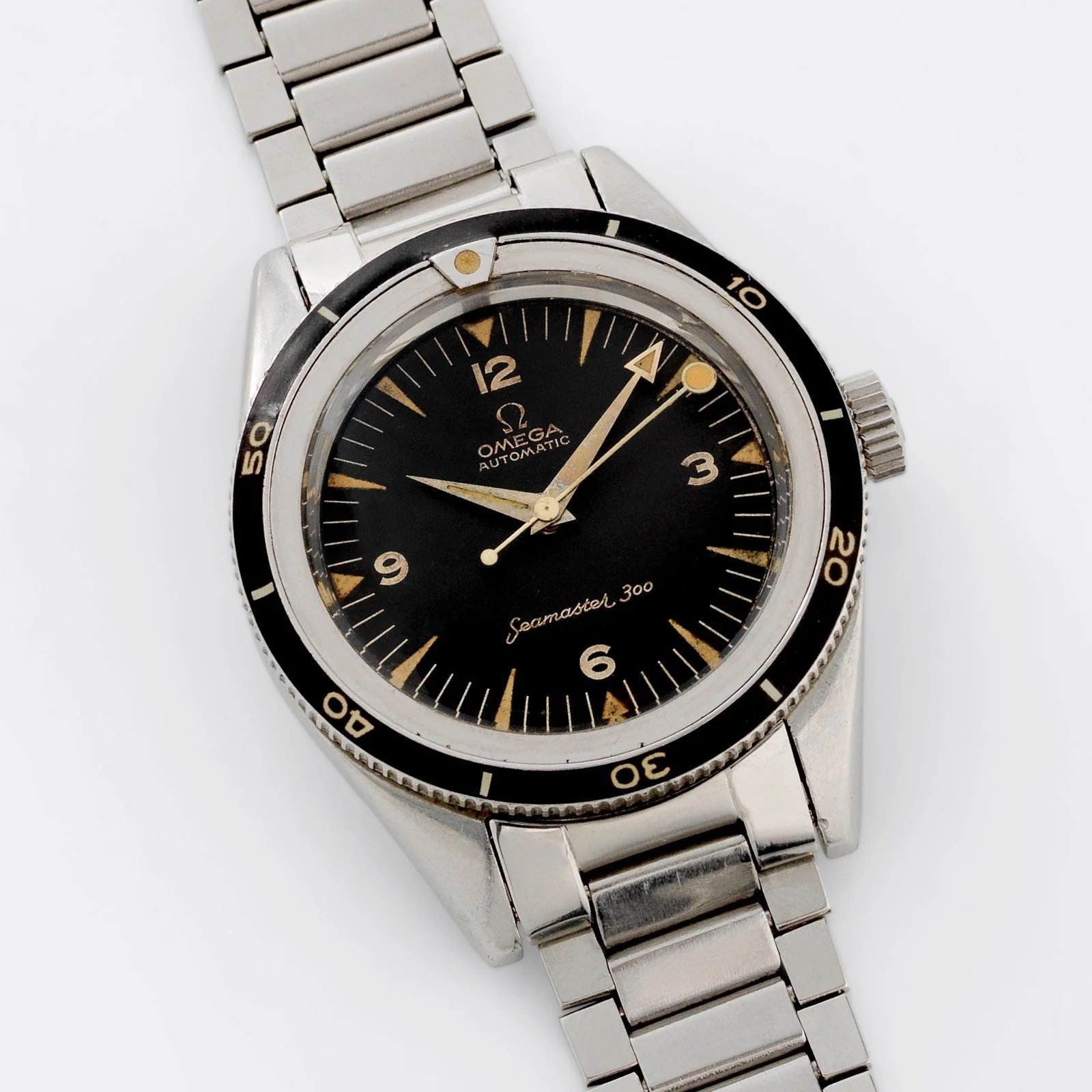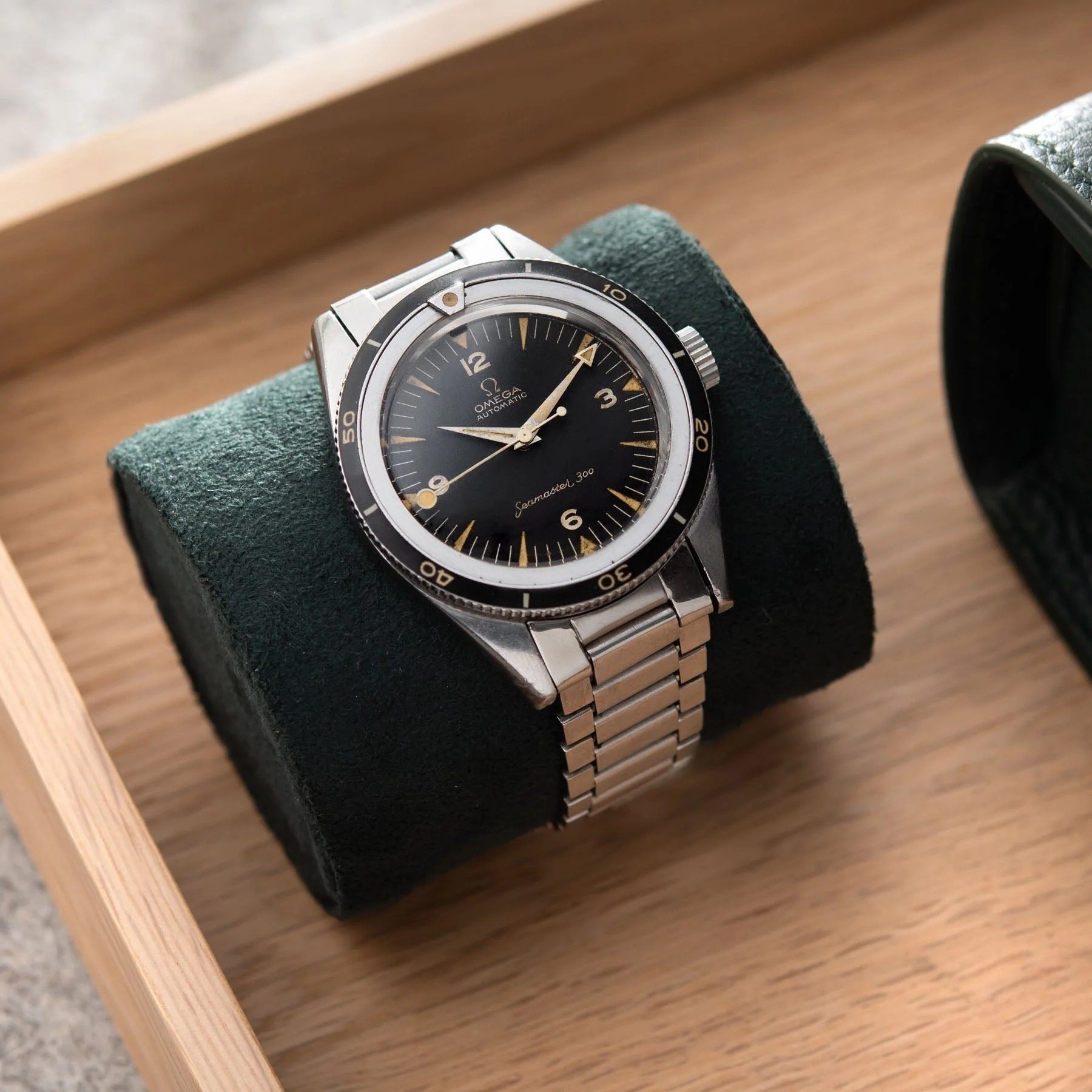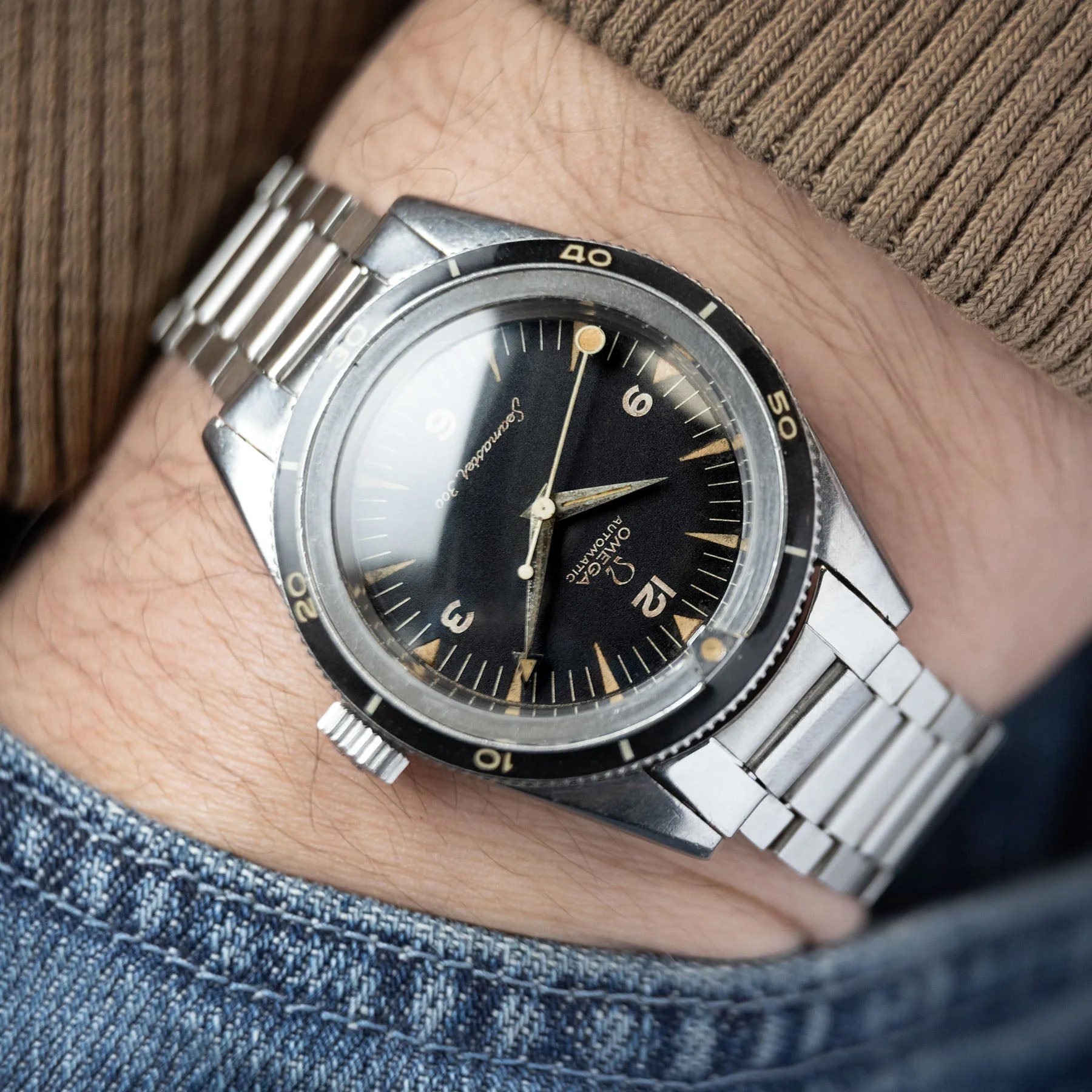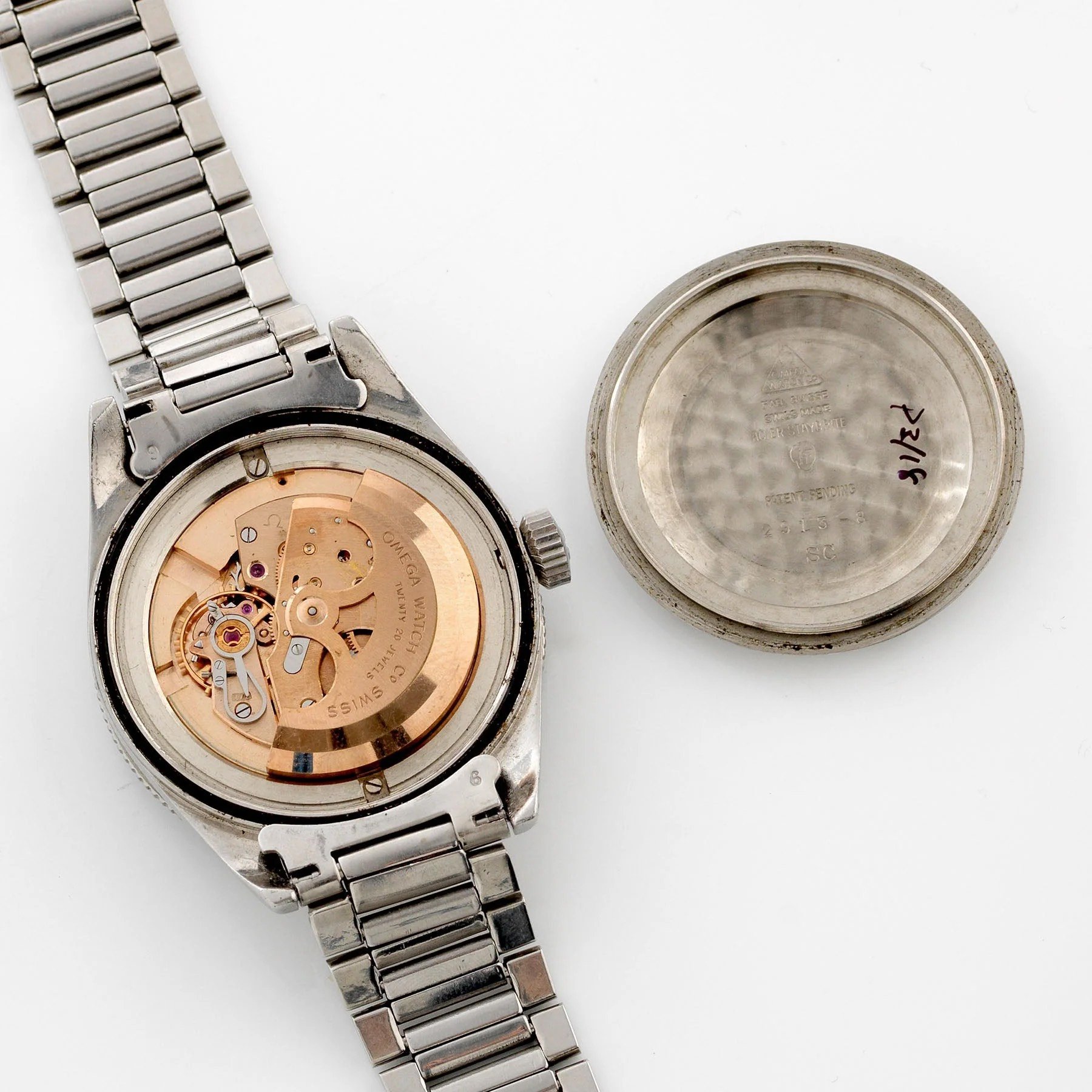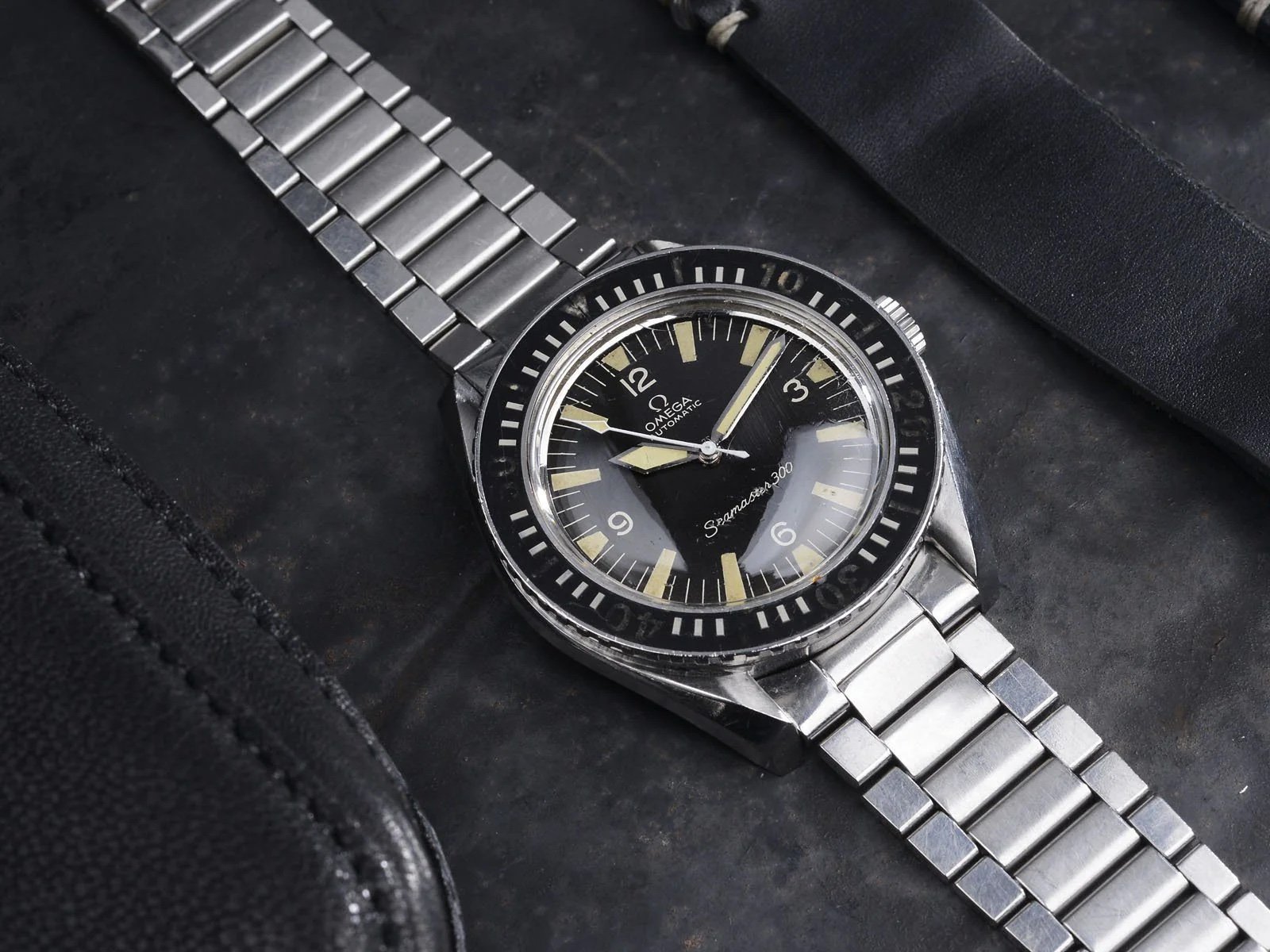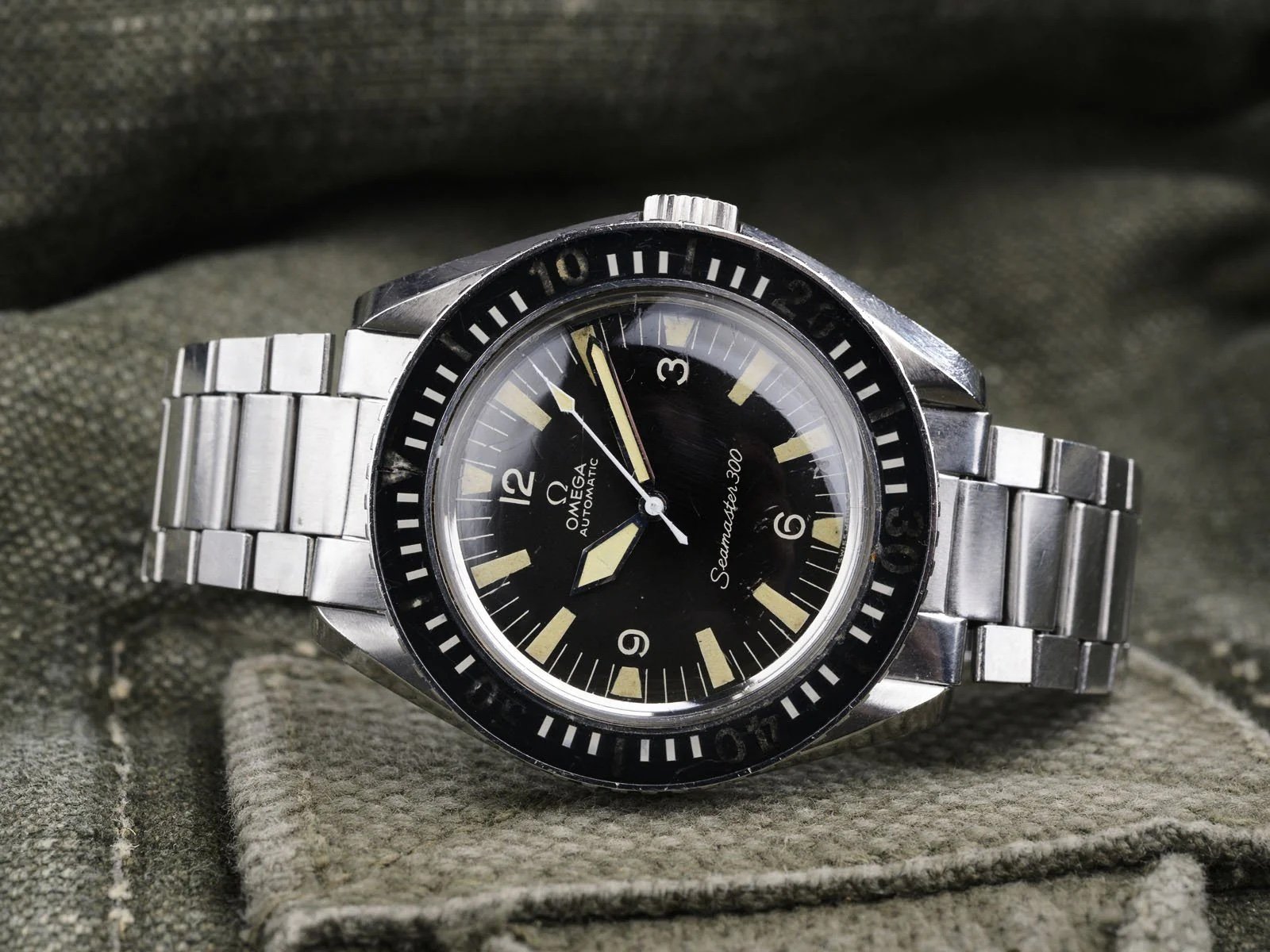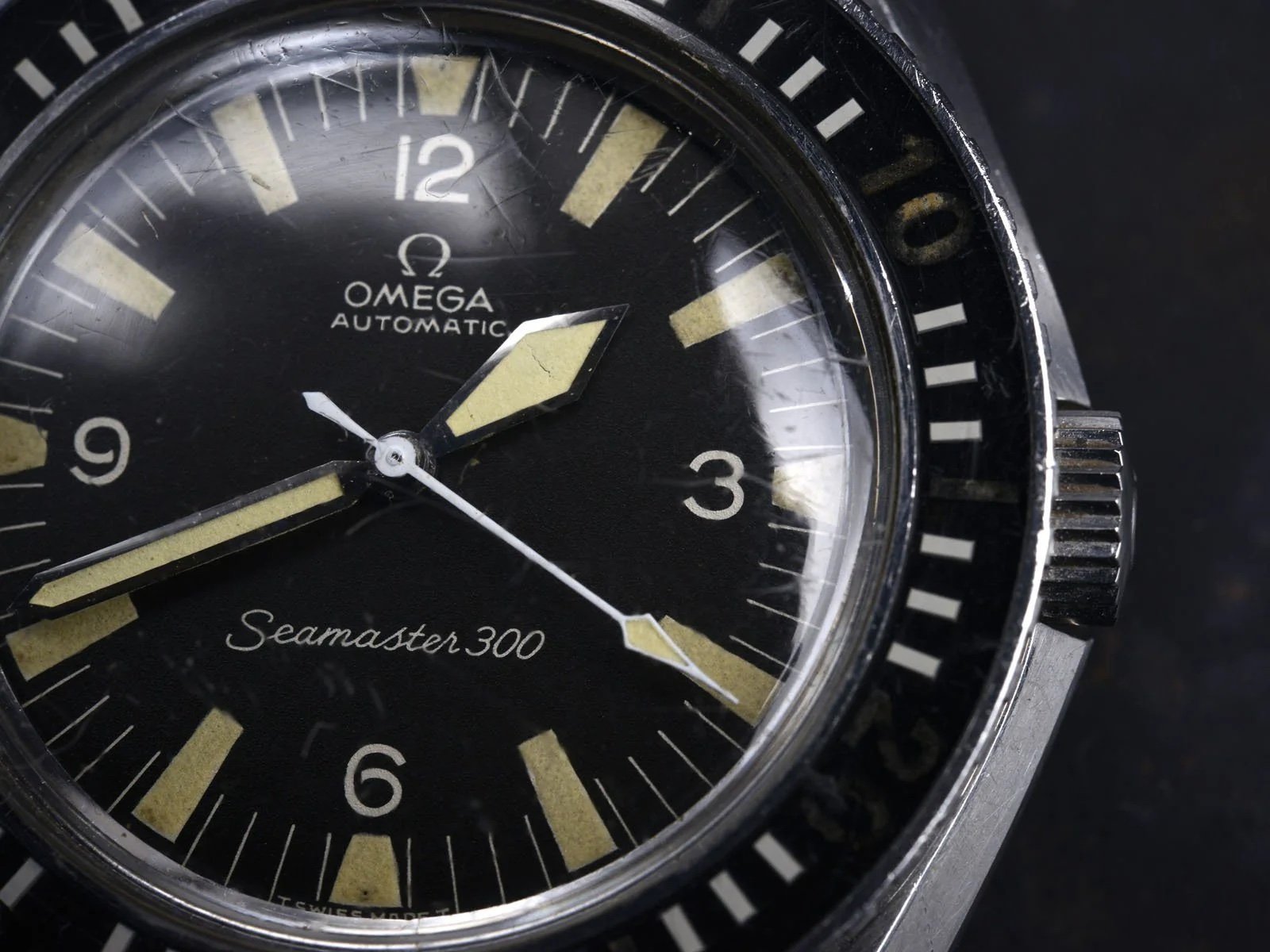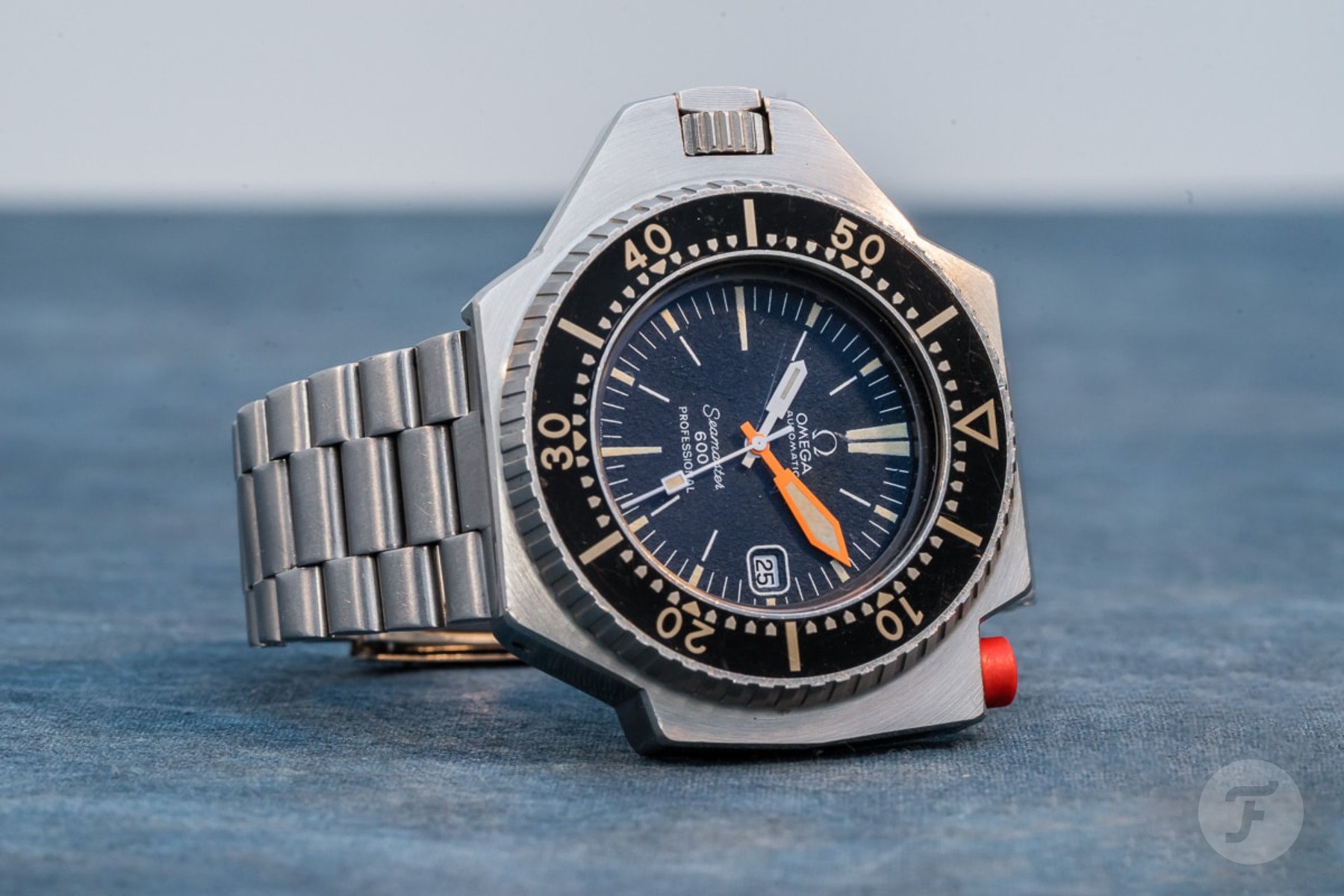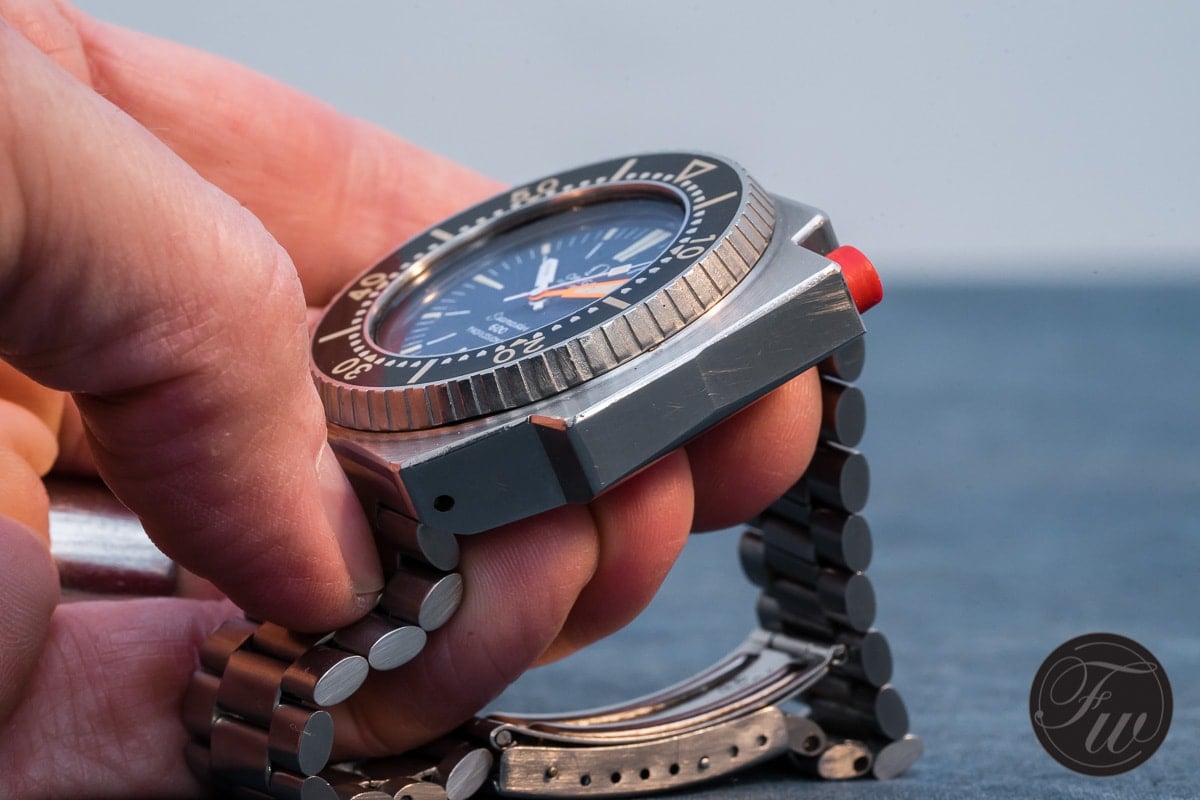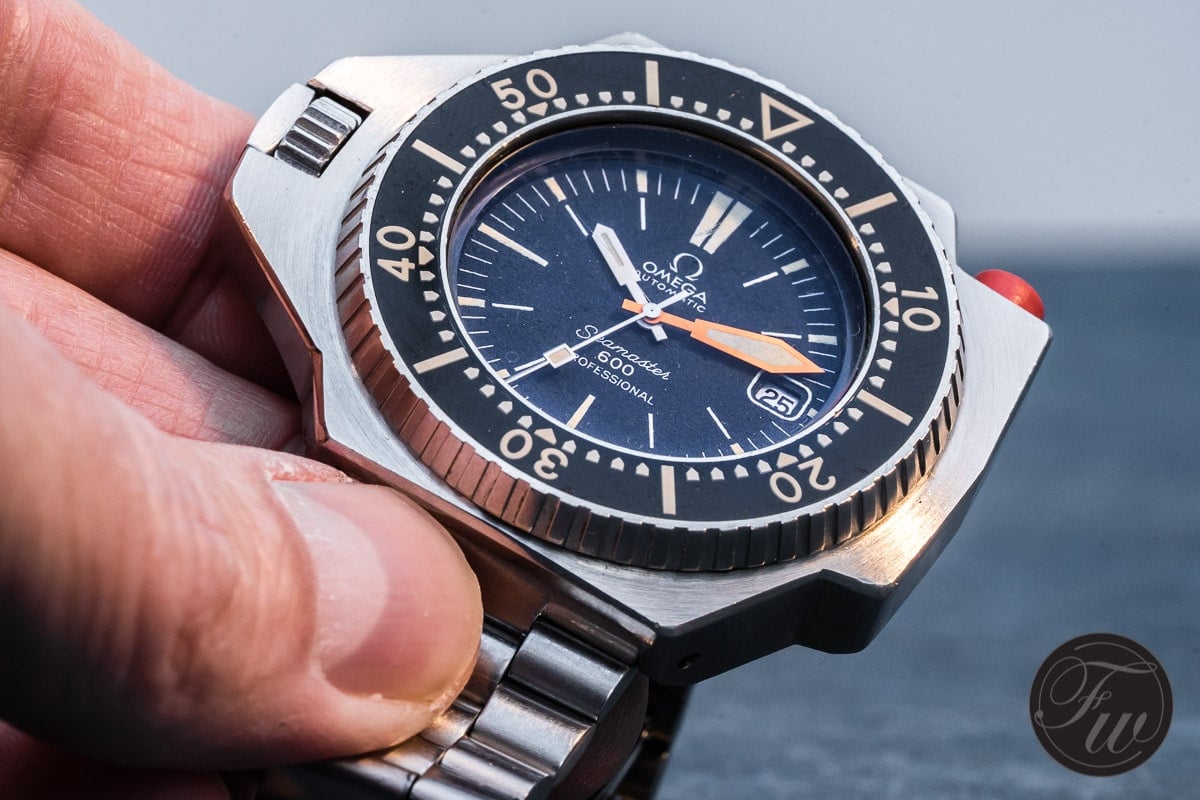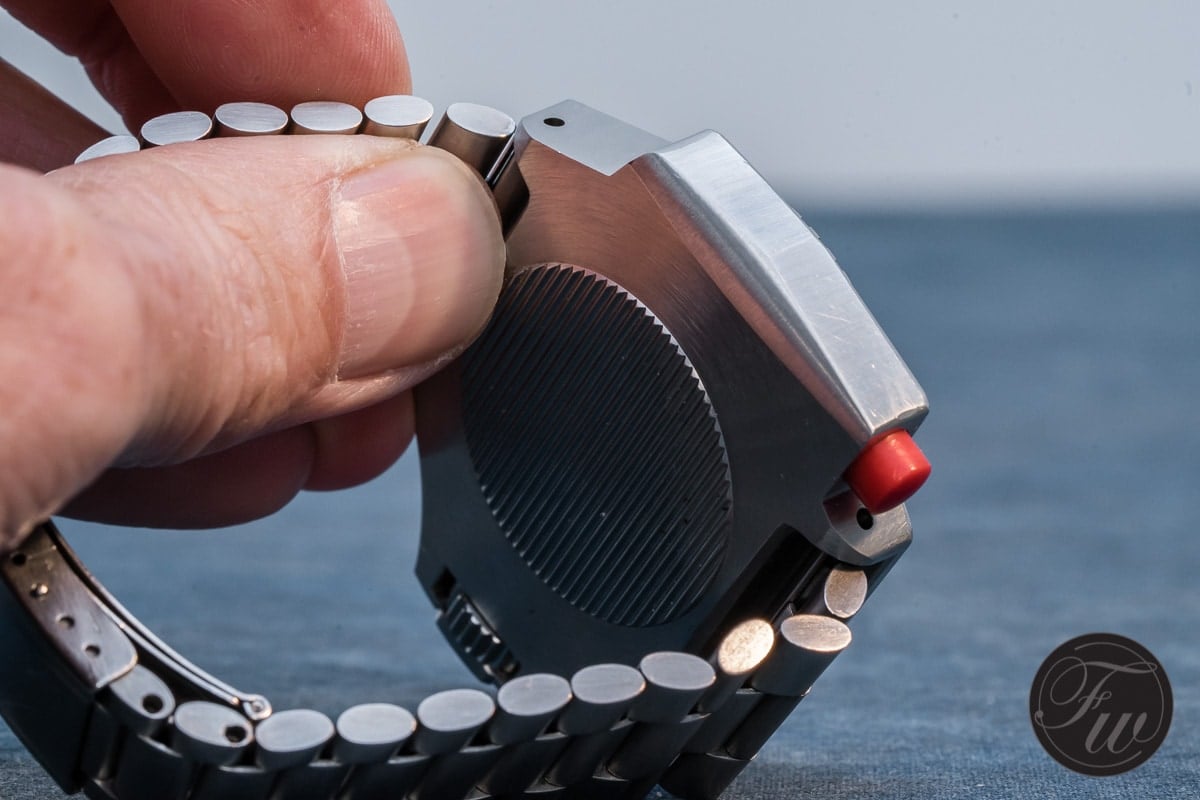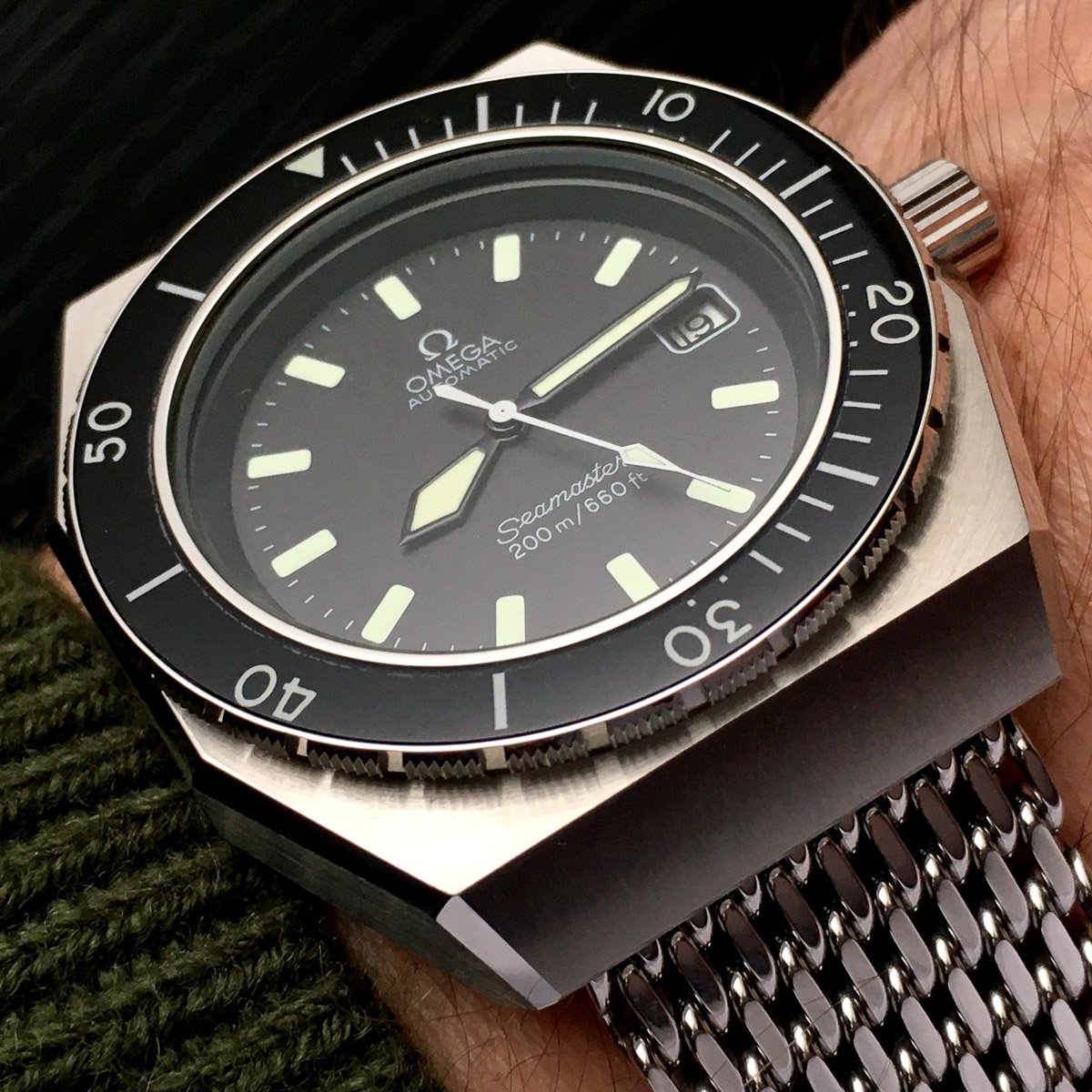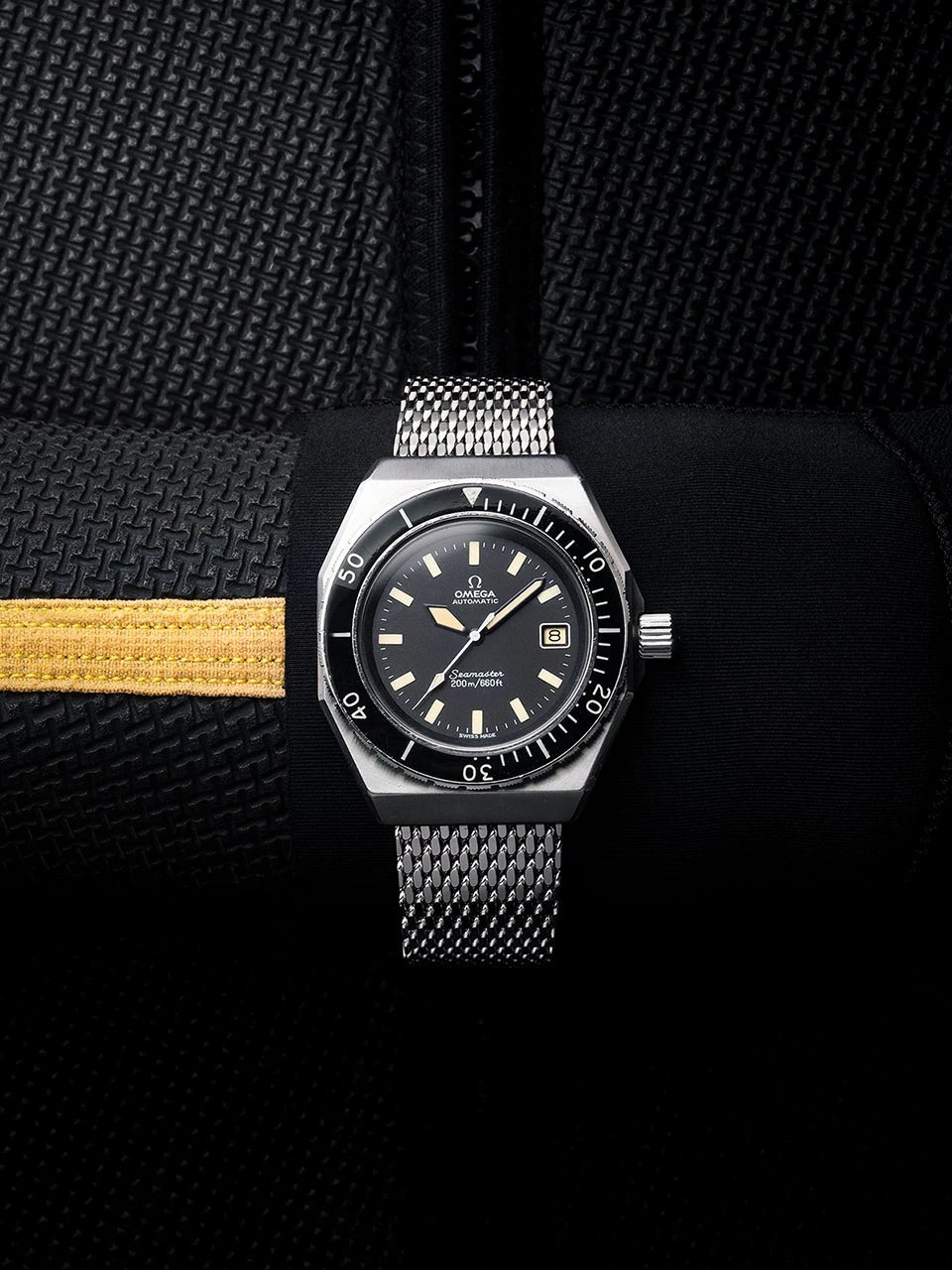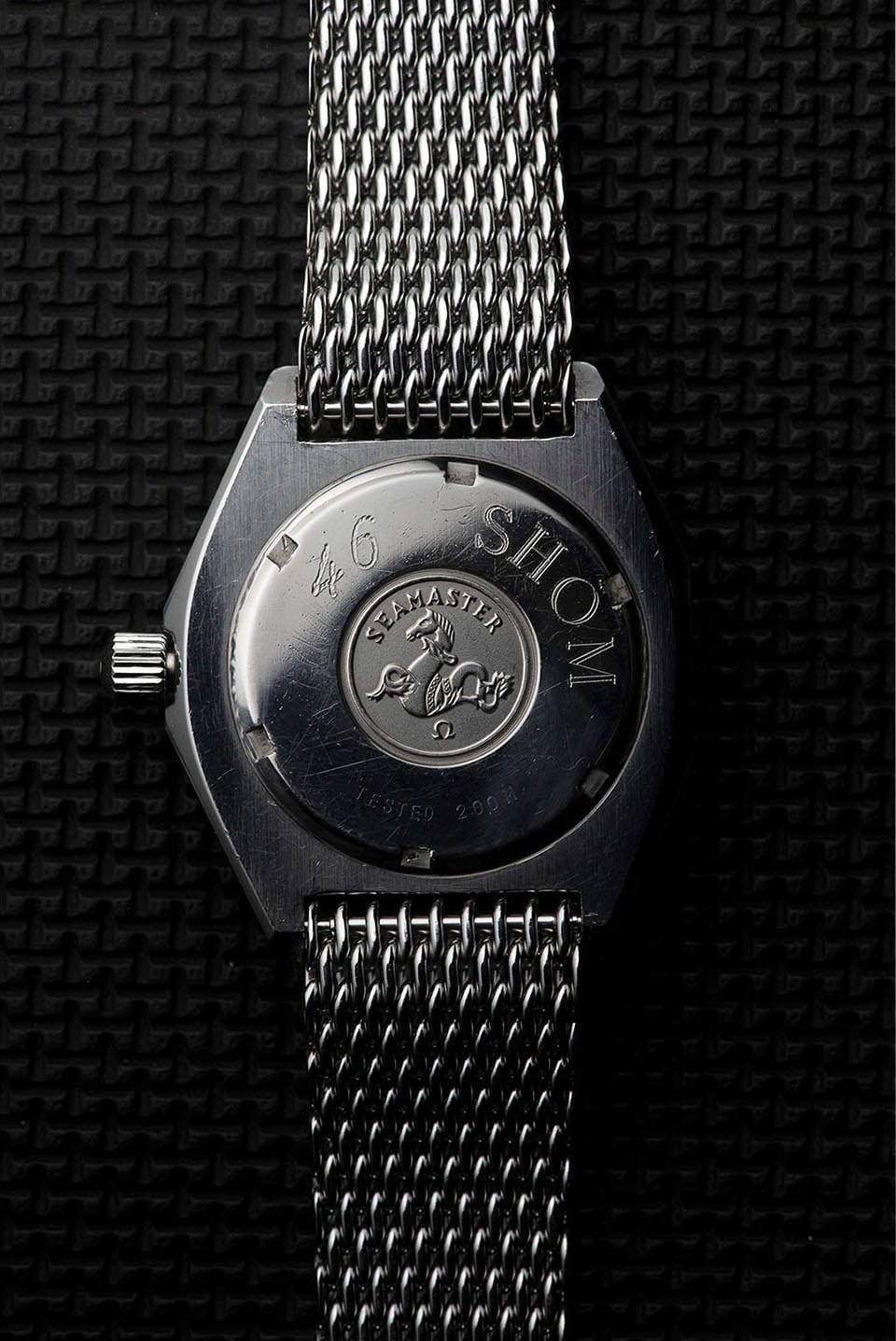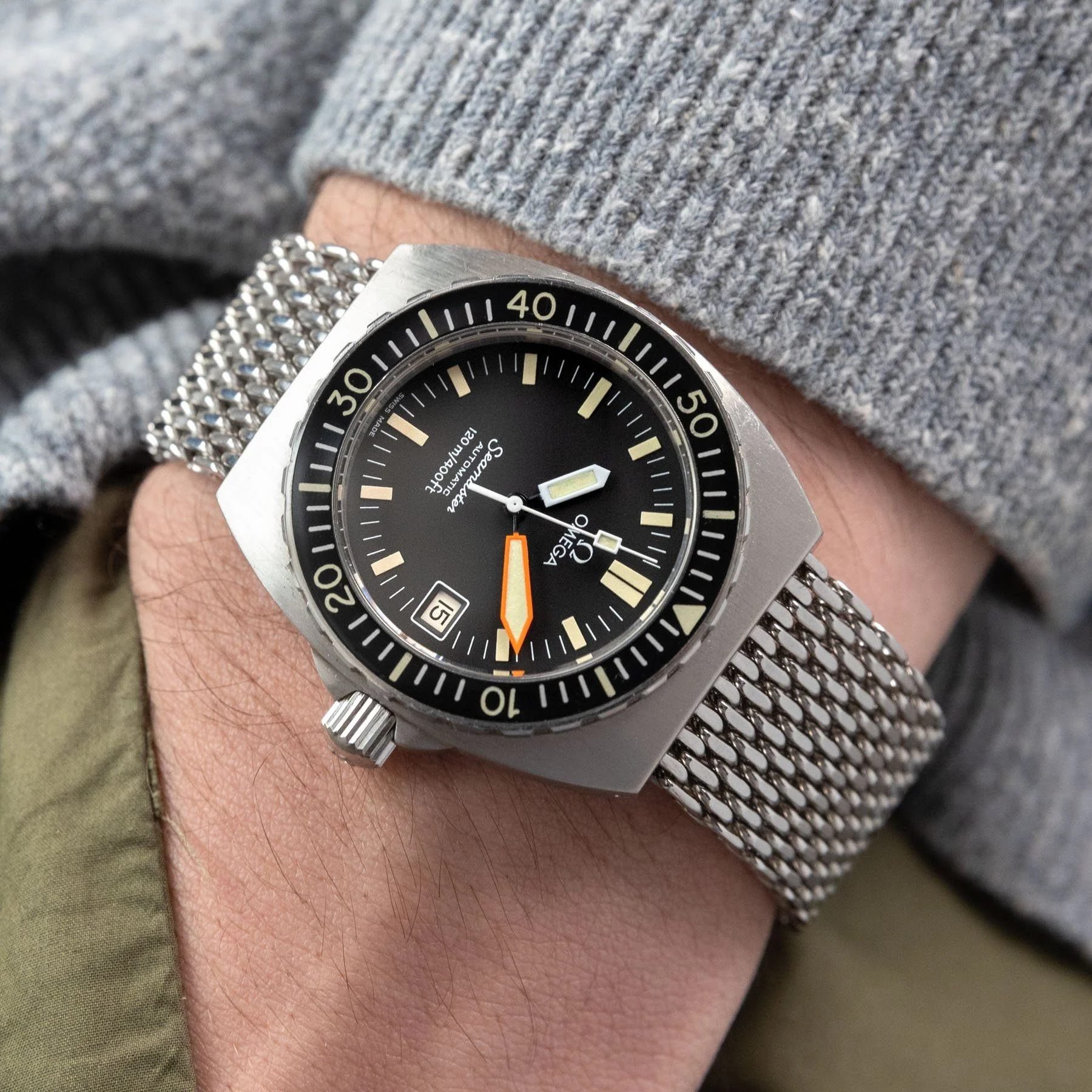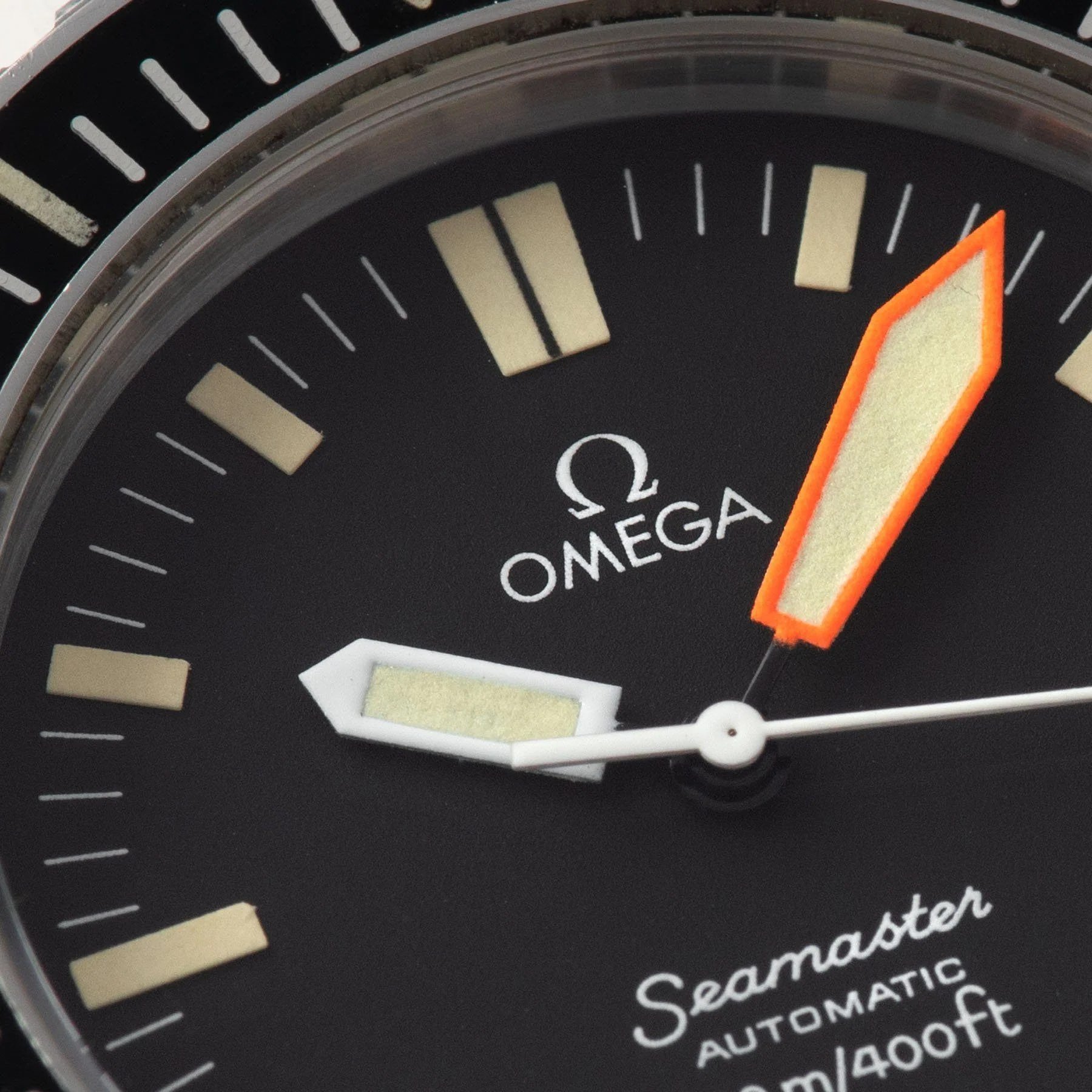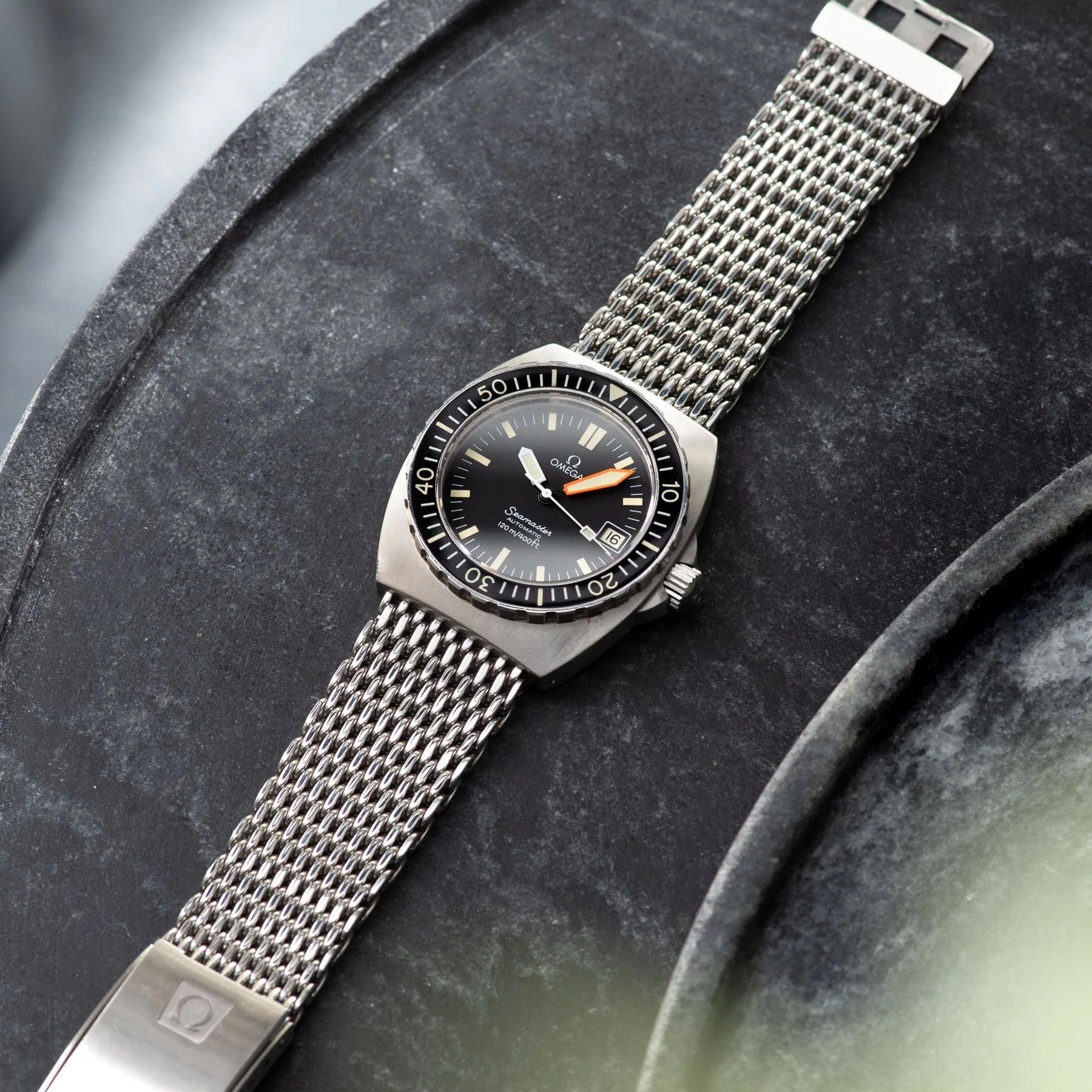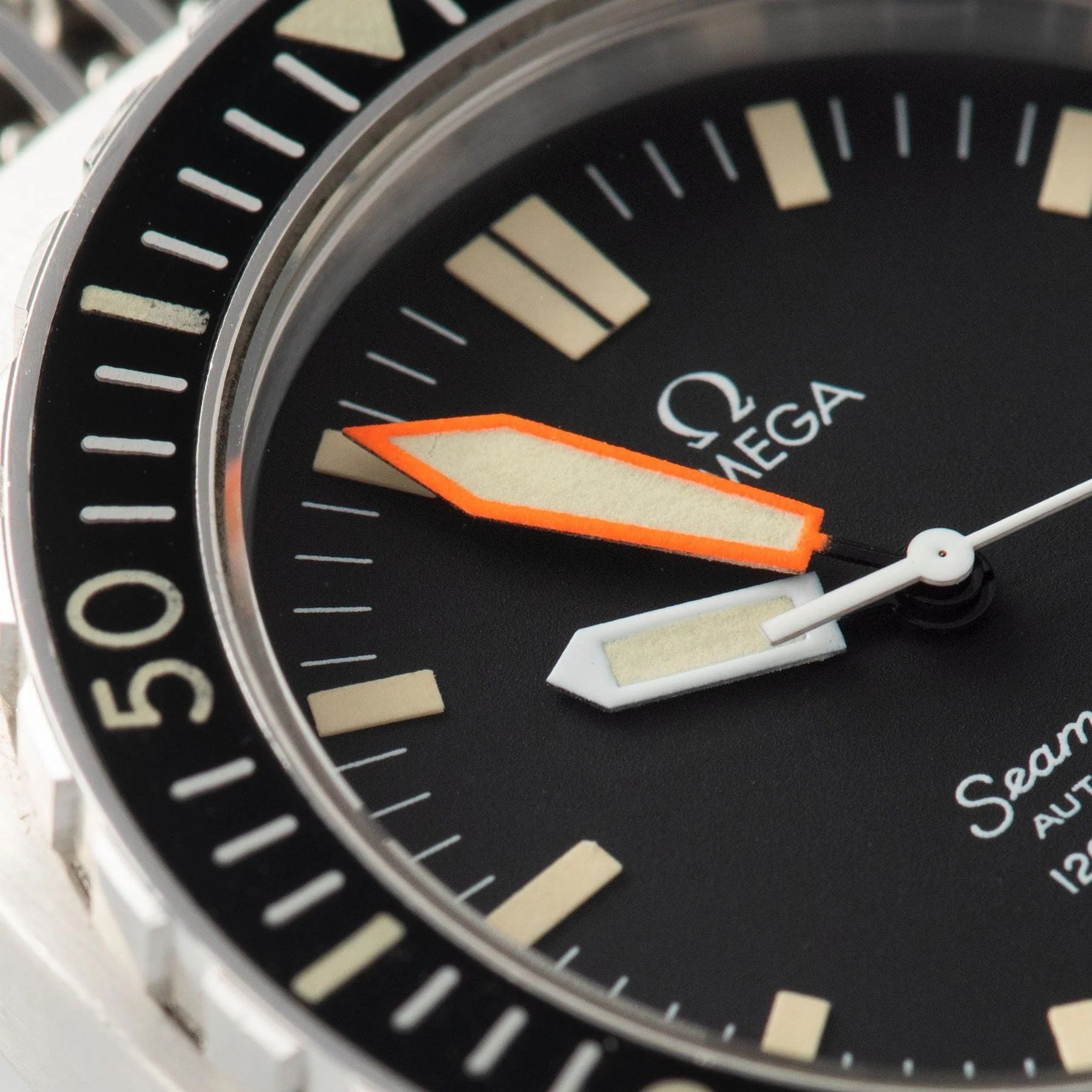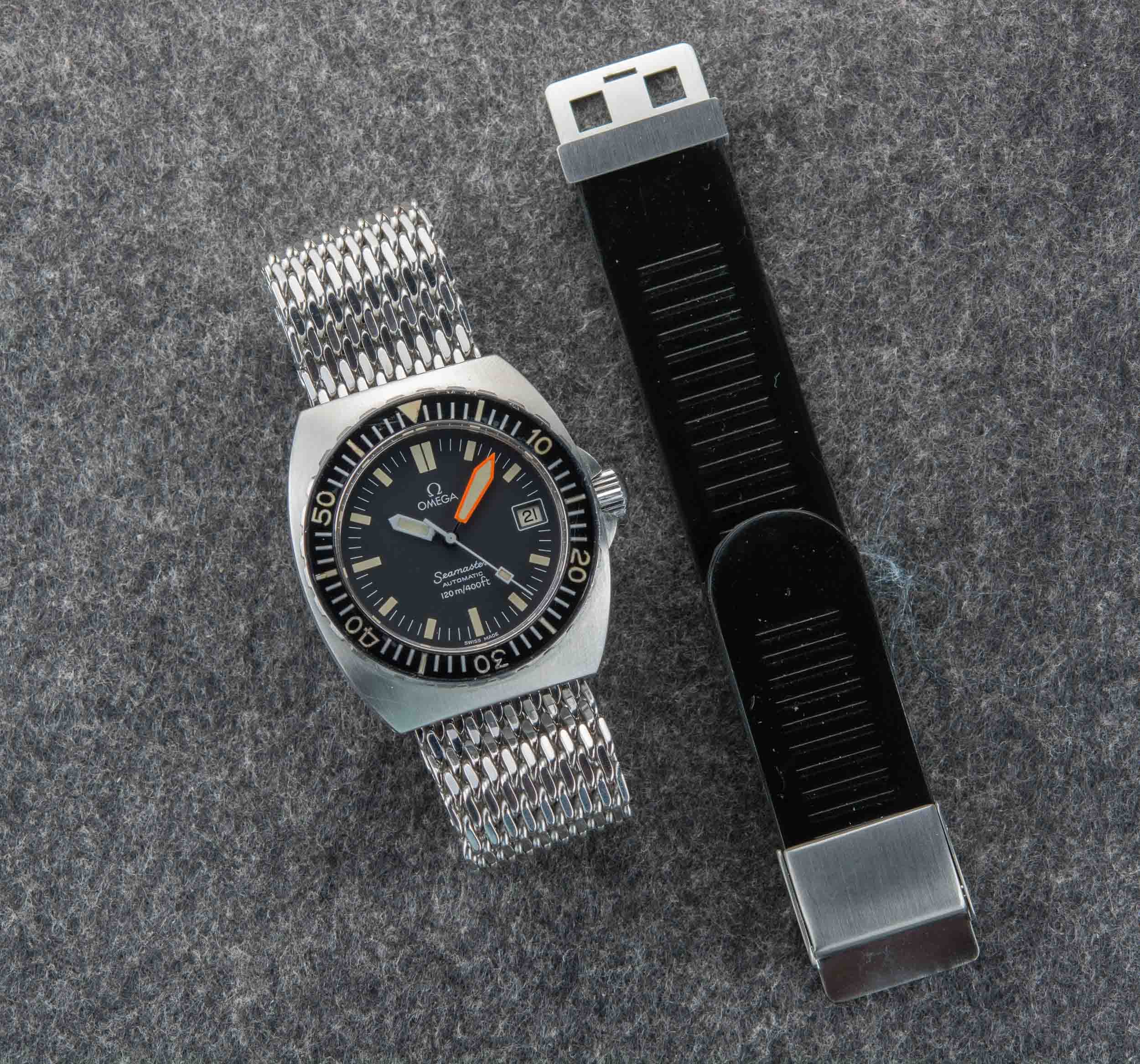Fratello’s Top 5 Vintage Omega Seamaster Dive Watches
Another Friday, another list! This week, we look at the brilliant and rich history of Omega Seamaster dive watches. The lineage started in 1957 with the introduction of the first Seamaster 300, which was part of Omega’s famous trilogy along with the first Speedmaster and Railmaster models. After that, the brand released many iconic dive watches that have become fan favorites. For this list, we picked our top five that show the great history of Omega’s dedicated series of Seamaster dive watches. Let’s find out what they are!
Before we get into our list, though, let’s define what we mean by “vintage Seamaster dive watches.” As I explained in the intro, it all started in 1957, so we’ll kindly disregard the Seamaster models that came before and the “dressier” Seamaster models that came after. Maybe it’s better to say that we picked Omega Seamaster dive watches with rotating bezels. Additionally, we decided to stop at the introduction of the Seamaster Professional 300M in the early 1990s. While we would still consider ’90s watches vintage or neo-vintage nowadays, we had to put the end marker somewhere for this list, and that seemed like a good place. So, let’s find out what our five picks are.
Omega Seamaster 300 ref. CK2913
Let’s kick things off with the Omega Seamaster 300 ref. CK2913. As most of you know, it was part of Omega’s legendary trilogy that included the first Speedmaster, Railmaster, and Seamaster 300 models. While the Seamaster name had been part of the brand’s collection since 1948, the Seamaster 300 was Omega’s first proper dive watch as we know it today. The watch featured a 39mm stainless steel case that was 13.8mm thick and measured 48mm from lug to lug. The case size is still relevant today, but it was significantly larger than most dive watches at the time.
The watch stayed in production until 1960, and in those three short years, Omega produced eight iterations of the Seamaster 300. All eight versions are simply referred to as CK2913-1 to CK2913-8. They featured the same matte black dial with triangular hour markers, recessed radium plots, and white Arabic numerals at 3, 6, 9, and 12 o’clock. Over time, the white markings developed patina, which also gave the watches a certain warmth. It’s that patina that also inspired the dial design of the current Seamaster 300 series. Inside the case, Omega used its caliber 501 for all eight versions. This automatic movement beat at 19,800vph and offered a 46-hour power reserve.
Finding an Omega Seamaster 300 CK2913 is hard
Where the eight iterations differ from each other is the bezel insert and the hands. To start with the former, Omega used countdown bezels for the first two versions. All six that followed featured a count-up bezel insert. All of these inserts were made of Bakelite, a material that cracks very easily. This is the main reason why it can be tough to find a first-generation Seamaster 300 in good condition. If you find one that’s not in great condition, consider having it restored. That’s what Fratello editor Tomas did with his Seamaster CK2913. Check out his story because it is remarkable.
Regarding the different styles of hands, the brand started with a Broad Arrow handset with a large arrow on the hour hand, a pointed minute hand, and a straight seconds hand. The five iterations that followed featured a pointed hour hand, a minute hand with a small arrow, and a straight seconds hand. A great variation is the watches that were equipped with a lollipop seconds hand. It’s another detail that Omega uses for its current Seamaster 300, and I love it because it adds character. As mentioned, finding a CK2913 in decent condition can be hard. When you do, expect to see prices roughly between €10K and €20K. But one in good condition with the original bracelet will easily add another €10K to the price. Considering this watch’s legendary status, that’s not too crazy if you ask us.
Omega Seamaster 300 ref. 165.024
Our next pick is the Omega Seamaster 300 ref. 165.024. A lot of people consider this the second-generation Seamaster 300, which might be right in terms of case design. But between the CK2913 and this 165.024, Omega also produced the very rare Seamaster CK14.755 from 1960 until 1962, which featured an updated caliber compared to the inaugural CK2913. After that, Omega introduced the very rare ref. 165.014 featuring the same case and movement but with an updated dial. The new dial design featured different hour markers and a new handset that drastically changed the watch’s presence.
This reference was also the segue into the Seamaster 300 ref. 165.024 and ref. 166.024 that came out in 1963. The difference between the two is that the former does not feature the date, whereas the latter has a date window at 3 o’clock. Both featured a bigger 42mm case with a 47.5mm lug-to-lug, a 14.5mm total thickness, and a 300m depth rating. The new case was combined with a dial and handset that followed the design of its predecessor. The watch stayed in production until 1971, and during its production run, Omega used four dials, four handsets, and no fewer than 11 bezel variations.
A great classic that comes at a price
Inside the 42mm case, Omega used its caliber 552, which also powered the two previous references. The 24-jewel automatic movement operated at 19,800vph and had a 50-hour power reserve. Omega introduced its caliber 560 for the American market to power the ref. 165.024. Essentially, it was a caliber 552 with a lower jewel count. Omega reduced the jewel count from 24 to 17, but otherwise, it was the same movement.
Most of all, though, these Seamaster 300 models presented a new aesthetic with a bigger and more modern case. The dial and hands also suited the case design and different bezel inserts beautifully. It makes this great Seamaster a much-desired vintage classic. Expect to see prices roughly between €5K and €20K depending on the condition. Examples that come with the original stainless steel bracelet are particularly expensive as not that many survived. But if you do find it on a bracelet in good condition at a good price, you will have an absolute classic!
Omega Seamaster Professional PloProf 600 ref. 166.077
If you know us a little bit, you knew this was coming. With Gerard, Robert-Jan, and yours truly, we have three big fans of the PloProf on board at Fratello. I was sold when I first laid my eyes on Gerard’s classic PloProf 600 roughly two decades ago. That freakishly bold watch with a big red button was intriguing and looked like a proper tool that would get the job done. And that’s the whole idea behind this watch. Form certainly followed function when the watch was designed because it was developed for professional divers, hence Plongeur Professionel, or PloProf.
The watch debuted in 1971 and presented a new over-the-top aesthetic that seemed to completely disregard symmetry. The solid monobloc case made of high-grade stainless steel measured 54mm wide, 45mm long, and 15mm thick. As you will understand, calling it “oversized” doesn’t do it justice because it was ginormous, especially for the time. On top of that, the asymmetrical case with its protected crown, locking screw, and a red button for unlocking the diving bezel still make for a watch that looks bonkers and immediately stands out. Another standout detail is the characteristic Plongeur handset that guarantees great readability. All these elements were the result of creating the ultimate tool for saturation diving. Omega understood that it needed to create a bold, oversized watch and used the input of the famous Comex dive team to make that happen.
Try to find an original PloProf 600
Many professional divers, including those from Comex, actually used the Omega PloProf. As a result, the watch was truly put to the test. One consequence is that divers regularly brought their ProPlofs in for service. Omega often replaced dials, bezel inserts, hands, and movements to ensure the watches would always perform up to the highest standards. The downside for purists is that it’s now hard to find a PloProf 600 in original condition. Although movements were also swapped regularly, Omega always used its automatic caliber 1002. It’s a straightforward movement with a date function and hacking seconds that Omega also used for other watches. The movement operated at 28,800vph and offered 42 hours of power reserve.
When it comes to finding a vintage PloProf, you must do your homework. A great resource to use is Omegeploprof.com. In terms of prices, expect to see them on offer between roughly €8K and €15K. You will find them on either the signature black rubber strap, stainless steel bracelet, or the great mesh bracelet that most people love for the PloProf. I would chase it on a mesh bracelet and add the black rubber strap for sentimental reasons. I love the PloProf 600 because it has a unique design that originated from a functional need. That’s what makes the PloProf story incredibly compelling.
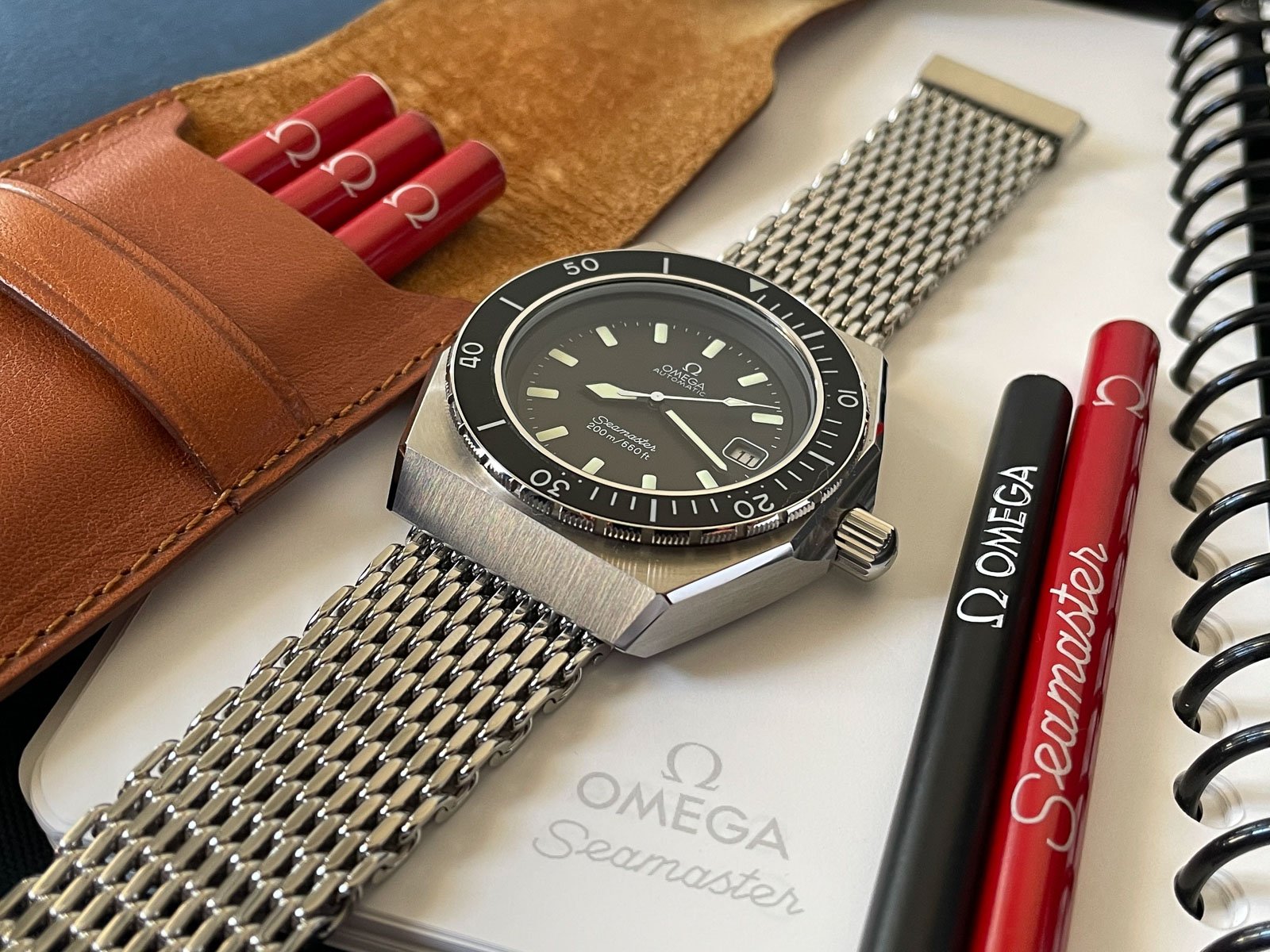
Image: @steviemac1040
Omega Seamaster 200 “SHOM” ref. 166.0177
Next up is another classic Omega dive watch that fans of the brand adore. The Omega Seamaster 200 “SHOM” ref. 166.0177 comes with a remarkable story. Collectors love to talk about how there are both proper vintage models and ones assembled with NOS parts by Watchco, an Omega parts-and-service center in Australia. If you are a purist, you’d probably want a proper vintage one. But after seeing a SHOM made from NOS parts, I can only say that it was an impressive watch regardless of its provenance. Omega introduced the first Seamaster 200 model in 1969. But it took four more years before the Seamaster 200 ref. 166.0177 was presented during the Basel fair in 1973.
The brilliant eyecatcher of the watch is its beautiful angular and beveled 42mm by 49mm case. It’s an absolute feast for the eyes with its different chamfers connecting the face of the watch and the sides. Additionally, you get a characteristic large crown that suits the case design perfectly. Add a beautiful mesh bracelet to the lugless case, and this watch is an absolute stunner. The case is paired with a matte black dial with very straightforward hour markers and a date window at 3 o’clock. Finishing the look are the sword-style hands that are typical for vintage Omega divers.
Do you go for an original or NOS version?
Inside the case, Omega equipped the watch with its automatic caliber 1012. This 23-jewel movement operated at 28,800vph and offered 42 hours of power reserve. It’s a classic Omega caliber that the brand used for many of its watches in the 1970s. To learn how the watch got its “SHOM” nickname, we have to jump forward to 1978. Five years after its debut, France’s Service Hydrographique et Océanographique de la Marine (SHOM), a government institution specializing in marine studies and the publication of official marine charts and maps, picked this Seamaster 200 as the watch of choice for its divers. Omega delivered a small batch of SHOM Seamasters engraved with the letters “SHOM” on the case back.
When it comes to finding a nice Seamaster 200 SHOM, you have two choices — vintage or NOS. Do your research and ask the seller whether it is a proper vintage version or one of the NOS versions assembled between 2005 and 2015. Prices for the Seamaster 200 ref. 166.0177 start around €4K and move up to roughly double that. What you get in return is a beautifully designed watch that comes with a proper story. It makes this Seamaster one of the most special Omega dive watches out there.
Omega Seamaster ref. 166.0250 “Baby PloProf”
Our fifth and final pick for this list is the Seamaster ref. 166.0250, which most Omega collectors lovingly refer to as the “Baby PloProf.” While it is a fundamentally different watch in terms of the case design, the instantly recognizable Plongeur hands and the mesh bracelet visually connect it to its bigger brother. The Baby PloProf came out in 1978 and featured a beautifully sculpted 39mm stainless steel case with a 120m depth rating. It looks bulky, but it’s a lot more elegant than the sharper lines of the Seamaster 200 SHOM.
Speaking of which, Watchco, the same Australian Omega parts-and-service center, also assembled a series of these watches with NOS parts. They are often easily recognizable because they feature pristine bezels, unlike the proper vintage models. As with the PloProf 600, a lot of these watches were used for diving and, therefore, got serviced regularly. Consequently, there is hardly a true vintage model that doesn’t have a replacement bezel insert, dial, or hands. But don’t let that ruin the fun of owning one of these classics because it is an absolute joy to see and wear.
Different production years for the movement and the watch
Omega used different calibers inside the case for different markets. The standard movement was the automatic caliber 1012 that also powered the Seamaster 200 SHOM. The 23-jewel movement operated at 28,800vph and offered 42 hours of power reserve. For the US market, however, Omega used its caliber 1010, which had a lower jewel count. The movements are also often a source of confusion about when a Baby PloProf was produced. Caliber 1012 debuted in 1972, so it was in production before Omega introduced this watch. If an owner had to get the movement replaced during a service, it could have been replaced with a similar caliber with an earlier production date. This is something to keep in mind if you have your eyes set on one of these beauties.
Price-wise, the Baby PloProf starts at roughly €4K and moves up to around €7K depending on the condition. What stands out the most to me is that the watch looks as crisp as it did decades ago. Sure, it is unmistakably a vintage piece, but the case design shows that the Omega designers were on a roll in the ’70s, and I love that about the majority of the watches on this list.
Final thoughts on this list of Omega Seamaster classics
There you have it — our list of the top five vintage Omega Seamaster dive classics. These watches show that Omega pushed the boundaries for dive watches in functionality and design. On top of that, it is wonderful to see there is a definite design signature that visually connects all these watches. There is a natural evolution going from the CK2913 to the Baby PloProf that shows the Omega design team was analyzing its previous efforts to move forward, which is great to conclude. As always with these lists, these five watches are only the tip of the iceberg. Omega created many more great dive watches that could have been on this list. That’s why we want to know what your favorite classic Omega diver is. Let us know in the comments section, and we will be back with another list next week!
Header image: Bulang & Sons

